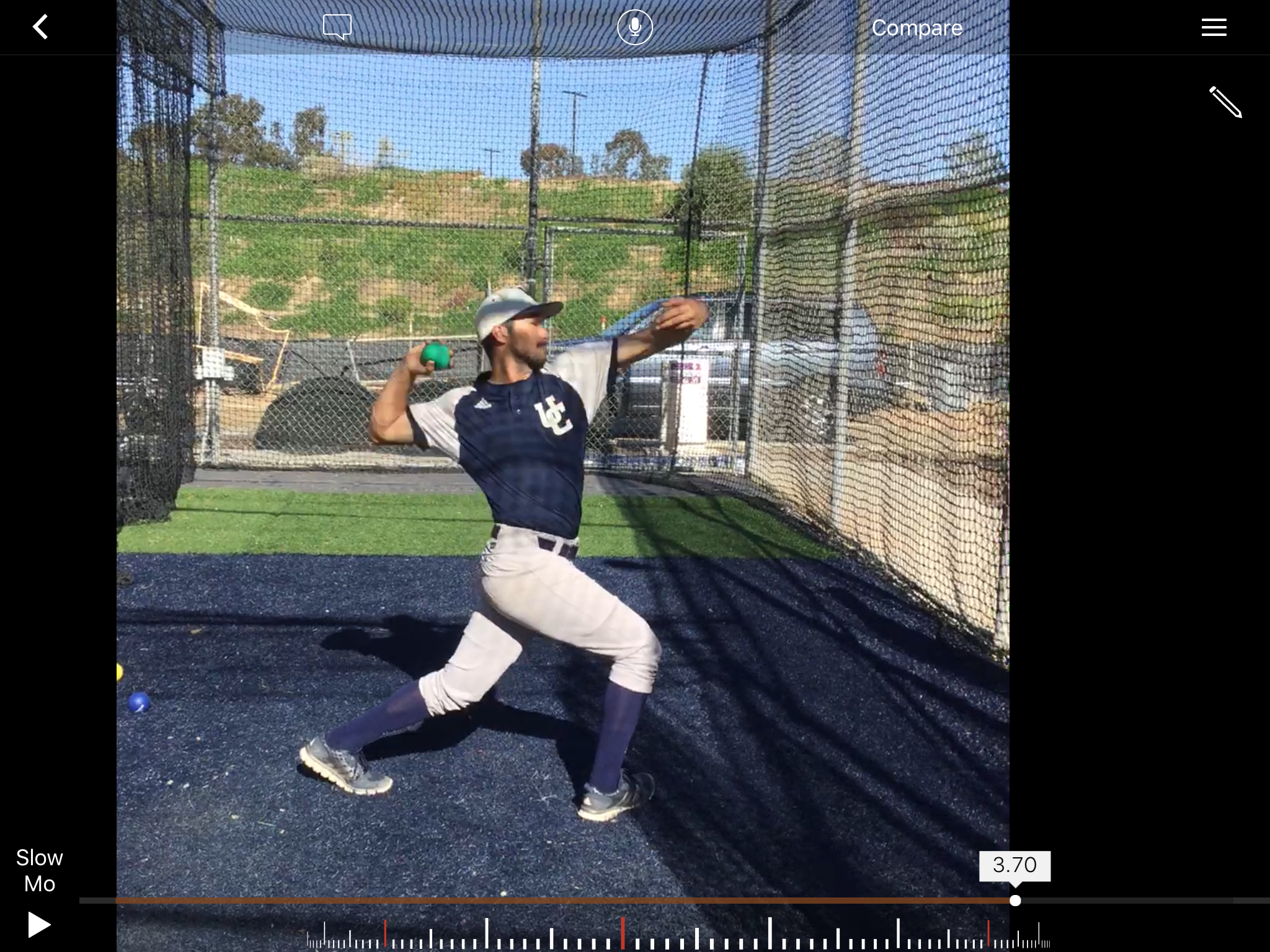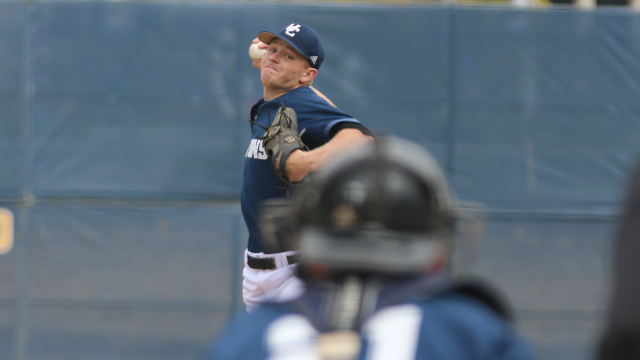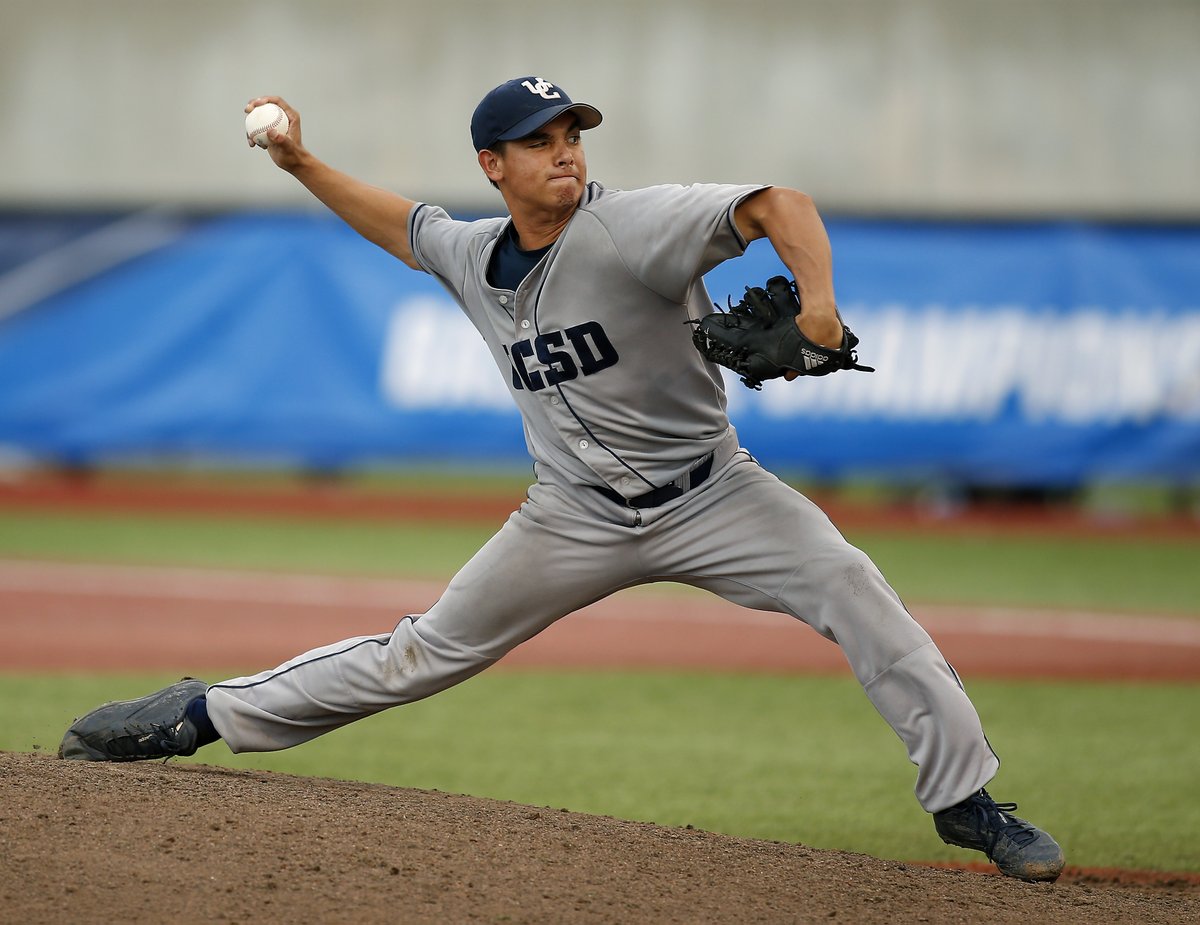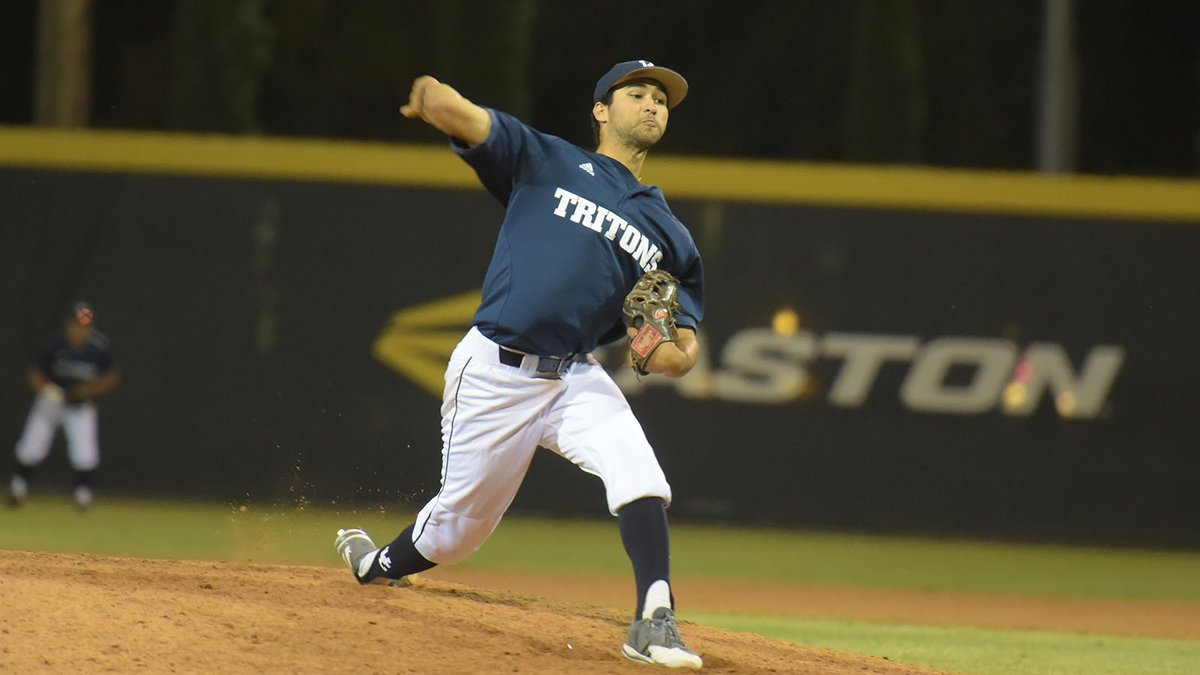Coaches Series: Year-Round Programming

This post from our Coaches Series was written by Justin James, Assistant Coach at University of California, San Diego. He took over there in January 2017, having coached the previous seven seasons at Point Loma Nazarene University.
In previous posts, I covered implementing Driveline Protocols to a new staff only 30 days before first pitch, then followed with a Season Recap on how the implementation was a success. In this post I will cover year three of fall ball with my staff using Driveline WBs and Plyo Ball ®.
As pitching coaches, or any collegiate coach for that matter, we dread the breaks. During summer and Christmas break, per NCAA rules, we are not to monitor or control our staff regardless of safety concerns or how much better they want to get. That said, a solid, detailed plan broken up into “phases” must be easy to follow and easy to test for when your staff gets back from breaks without supervision.
With this in mind, teaching and allowing for self-awareness and accountability is beyond crucial.
Sometimes this leads to small setbacks, but it’s a necessity if you want a year-round pitching plan to actually be followed. Staff must be tested regularly and scheduled with consistency so complacency doesn’t set in with your guys.
Planning for Different Seasons

Before each new “season”(start of fall, end of fall, return from Christmas, near end of season), a testing or baseline must be administered. This is for accountability, motivation, health, and the overall excitement of seeing ups and downs of developing. Keeping a track record of testing numbers is a great way to make sure your pitching program is heading in the right direction, and it’s also a great way to look for improvements with individual pitchers and the staff as a whole.
Once back from break, I always administer a WB testing session in week one, followed by Plyo Ball ® testing in week two. (This can be flipped or mixed at your discretion.) New members to the staff really enjoy this time because it gives them the competition element to training that was, for the most part, missing during the summer months.
This helps show gains, pitchers’ work ethic during the “off” months, and helps create their range velo-wise to accomplish recovery, hybrid, and high-output days. Without a baseline, they may not know what their difference is between hybrids and recovery days; this allows for more consistency and in return keeps them safer.
Not all arms are on the same summer or “off season” plan. Some go to summer ball and throw different amounts, and some stay home to train for various reasons. This particular year, we had new guys coming in playing summer ball and returners pitching all the way into August. I decided with these guys to train them differently than the rest of the staff.
I just let the new staff members pitching in summer ball pitch without trying to remotely train them for safety and over-training purposes. However, I provided example videos and articles to help them understand the process they would be doing once September training began; I said watch the videos a few times and read the “Why.” I personally felt more comfortable in this particular approach.
Returners that threw a ton over the summer and calendar year would not pitch off a mound for at least a month once they came back; they would be on a recovery and on-ramping plan until the middle of October. They trained like the offseason guys, were tested several times, and did a variation of the summer plan but not as extensive or intensive because of the short fall time frame and need to face hitters. Notably, these guys already had been in the program and very comfortable with the process, so they were technically in maintenance mode all summer long, so the gap wasn’t too large to implement this plan.
Balancing Strength and Mobility

Strength and movement patterns are extremely vital in the fall. Getting on the same page with your strength guy and knowing each other’s plans is invaluable. That’s where we made huge improvements this year. Our Strength and Conditioning coach, Jon Gregory, has been unbelievable in implementing our plan, and he takes the time to learn what we are doing from the pitching side. We had a few sit-down sessions where we discussed what to look for pattern wise, our daily drills, conditioning, etc. We tried to line up our “recovery” days better on both the throwing and lifting sides. This worked out great. It helped me not over train our guys, which at times I might have. I didn’t have to condition guys like in the past, because I know what I wanted was already being done in the weight room. This fall was the least amount I have ever conditioned my pitching staff, and I feel way better with the overall approach. I would still do my staple conditioning drills but with less volume and more intensity, allowing for more recovery and corrective-style exercises (with limited NCAA hours per week, this helped greatly).
Our fall consisted of five days per week. Here are some of the results from the beginning of fall and the end of fall Plyo Ball ®-testing numbers:
In-game velocities were recorded and will be compared once the season starts for a more accurate reading, especially from the returners. Notably, many of the returners had gains, but not as massive as some of our new members. This is typical because they have been improving for over a year and gains will take even more work going forward. (This is explained in HTKC.)
Here is what occurred during the fall (the first time facing live hitters/last intra-squad). Sixteen pitchers threw in both first and last intra-squad. Pitchers usually have a small increase with adapting to the fall’s demands, in both throwing and in the weight room. I am pleased with these numbers:
Fall Tweaks/Possible Improvements

All great changes worth anything take time. Sure, some instant results do occur from time to time, because simply cleaning up habits, movement patterns, and behaviors can help someone that was deficient in those areas. I mention that because this fall I made some minor tweaks to the fall program, and it’s too early to see if they were the root cause for the improvement within the staff. Our testing numbers jumped significantly, so everything is recorded to make sure a better plan is put forth every season.
Here are a few obvious changes we’ve done that many of you may already do in some degree or another:
- We forced the “Why” on them and had multiple small meetings to go over what we’re trying to do with each warm-up, Plyo Ball ®, and cool-down protocols. This included reviewing videos provided by HTKC multiple times (each time they picked up something new), our own videos, and staff feedback with each other was very helpful. We also review printouts and readings semiweekly on each drill we do, broken into one-to-two pages at a time. I tried to close the gap between my coaching (cues/explanations) with what I really wanted and, more importantly, what they really understood. The biggest jump in numbers came directly after these sessions.
- We did the least amount of conditioning volume in three years, no eyewash running or movements that were already covered in the weight room. This takes constant communication with your strength team.
- We made zero mechanical changes or suggestions with anyone on staff. I corrected some Plyo Ball ® stuff but no on-mound fixes—only pitch execution stuff for the first five weeks.
- We did three different warm-ups. Two of the three involved hurdles; all three included corrective exercises, which most, if not all, can be found in HTKC and broken up weekly so you hit everything a few times per week. On pitch day, I gave them the freedom to choose.
- We did command training with underload and overload balls.
- We performed uphill and downhill throws for lead-leg blocking feel.
- We used compression LT throws in PFPs instead of blowing them out twice in the same day; they will hold back someway in both if not careful.
- We did more mound Plyo Ball ® for feel and timing.
- We held the high-inning, yearly workload guys out for mandatory rest. We on-ramped them and went through one phase (three weeks) of R&Gs before getting them back on the mound.
I hope everyone has a great break and end to their fall. I highly recommend re-reading and sharing with your staff some of the new material in the updated HTKC. It’s well done, and it allows you to very easily communicate your intentions to your staff using the resources provided with the book/program.
Comment section
Add a Comment
You must be logged in to post a comment.
Pulldowns: The What, Why, and When - Driveline Baseball -
[…] is an example schedule of when athletes can expect to throw […]
Coaches Series: Review of First Year Implementation - Driveline Baseball -
[…] COACHES SERIES: YEAR-ROUND PROGRAMMING […]